Recent datasets
This dataset shows the extent of the dugong sanctuary in the Torres Strait which prohibits the taking of dugong (area, gear and method restrictions).
The dugong sanctuary is a legislative boundary which is outlined in the Torres Strait Fisheries Management Notice No. 65 http://www.comlaw.gov.au/Details/F2007B00345 .
This dataset is for research purposes and is not authoritative. Refer to the legislation for the authoritative definition of the sanctuary.
This dataset shows the location and size of the 9 islands, cays and rocks that make up the Warraberalgahl and Porumalgal Indigenous Protected Area (IPA). The IPA is recognised as part of the National Reserve System and was officially declared on the 18/07/2014.
The declared area covers approximately 63 hectares. The following Islands, Cays and Rocks make up the IPA: Atub, Bara, Bini, Babui, Guiya, Maza Guiya, Miggi Maituin, Ugain and Ulu.
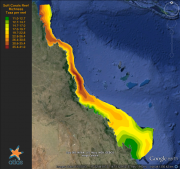
The purpose of this study was to quantify patterns in octocoral biodiversity and their environmental drivers on the GBR. The data are based on visual surveys of octocoral communities (soft corals and sea fans) on 163 GBR reefs. Octocorals contain taxa with and without endosymbiotic microalgae (zooxanthellae), and these two groups have contrasting distributions and ecological niches (Fabricius and De’ath 2008). Richness is therefore presented as number of taxa with and without zooxanthellae.

To date the seabird research program has:
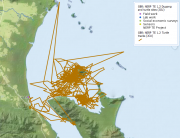
This project will monitor and study dugongs, dolphins and turtles along the coast of the GBRWHA with the following key tasks:
1. Determine the distribution and status of inshore dolphins in the northern Great Barrier Reef World Heritage Area (GBRWHA) by identifying likely important habitats based on collaboration with Tradition Owners and published information, then conduct line transect surveys (along with biopsy samples) in the Cardwell area (Girringun) and Bathurst Bay (far northern GBR).
This dataset contains a series of high resolution raster Digital Elevation Models (DEM) (1m resolution) around the coastal perimeter of Torres Strait community islands (Badu, Boigu, Dauan, Erub, Hammond, Iama, Mabuiag, Masig, Mer, Moa, Poruma, Saibai, Ugar, Warraber). This dataset was developed for the purpose of mapping levels of coastal inundation under different sea level rise and storm tide scenarios.
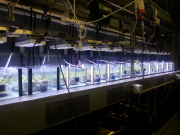
This dataset consists of one data file (spreadsheet) from a 2 week aquarium experiment manipulating pH (pCO2) changes and measuring photosynthetic and growth responses of three tropical seagrass species (Cymodocea serrulata, Halodule uninervis and Thalassia hemprichii).
The aim of this study was to test the hypothesis that increased pCO2 would increase photosynthetic and growth rates to various extents between seagrass species.
Method:
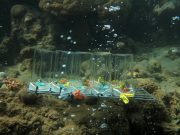
This dataset consists of one csv data file from field derived experiments at tropical carbon dioxide seeps in Papua New Guinea, measuring the response parameters: calcification, photosynthesis, carbon and nitrogen contents and carbon isotopic signatures on Halimeda opuntia grown under ocean acidification conditions.
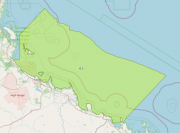
Turbidity is a measure of water clarity that quantifies the amount of small particles suspended in the water, and is a fundamental environmental parameter influencing coastal marine ecosystems. Turbidity reduces the light needed for photosynthesis by corals and seagrasses, and suspended particles also transport nutrients, pollutants and diseases. Previous research based on 3 years of turbidity data collected from 15 inshore reefs by the Reef Rescue Marine Monitoring Program has shown that it can take several months for water clarity to improve after river floods.

This dataset consists of one data file from a 10 week aquarium experiment manipulating salinity and measuring density, reproduction and growth responses of three tropical Indo-pacific seagrass species (Zostera mueller, Halodule uninervis and Halophila ovalis).
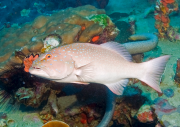
This dataset demonstrates the suitability of microsatellite markers to discriminate between species of coral trout (Plectropomus spp.) and identify parent-offspring relationships in natural populations.
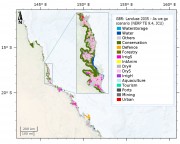
This dataset consists of different possible land use configurations along the Great Barrier Reef coastal zone for the future (year 2035) under eight different scenarios (plausible futures). Scenarios are not predictions and do not intend to show what the coastal zone will look like (this is impossible as the future of coastal development I highly uncertain, even on a short term basis, let alone 25 years). Instead, scenarios are used to depict some plausible futures under certain circumstances so that managers can understand the system better and the various ways the future might unfold.
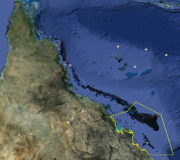
The database contains native and alien species records for National Park islands in the southern Great Barrier Reef. Attributes for each record include information on abundance, life history traits, habitat requirements, limitations of source, and relevant species information from government bodies including EPBC and NCA listings. Basic interaction information among species (alien vs. native) is also recorded. This dataset also has basic information about the islands such as area, location, and regional ecosystem types present on the island.
This project will develop a cost-effective approach for prioritising management actions across Great Barrier Reef islands to maximise conservation outcomes. The approach will be broad-based and include pest control, adjustment of fire regimes, biosecurity measures and monitoring. A decision-support tool with GIS capability will help managers to identify management priorities within and between islands.The sub-region selected for this project includes 150 islands within the Great Barrier Reef World Heritage Area from south of Mackay to Bundaberg.
This metadata record describes physico-chemical and nutrient data collected through in situ monitoring by the Great Barrier Reef Marine Monitoring Program for Inshore Water Quality (MMP WQ). A full description of the MMP WQ and its associated datasets can be found in the parent metadata record linked above. Water quality sampling is conducted during both ambient conditions and river discharge events. Ambient monitoring refers to routine sampling during the wet and dry seasons outside of major flood events.
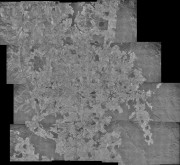
This dataset is a photo mosaic of historic aerial imagery of the southern Atherton Tablelands from 16th June 1978.
It includes the towns of Atherton, Malanda, Yungaburra and Tolga. It has a southern boundary just north of Millaa Millaa, a northern boundary of Lake Tinaroo, an eastern boundary of a quarter of Wooroonooran National Park and a western boundary of Atherton.
This dataset shows the measured response of the photosystems of seagrasses to herbicides in experiments conducted in 2012-2013. The data is provided as a multi-sheet spreadsheet.

The objective of this project is to assess how management of local stressors such as land runoff can help improve the resilience of coral reefs to global stressors (climate change) which are more difficult to manage. Complementary laboratory and field experiments will investigate the combined impacts of declining water quality (increased nutrients and sediments, and reduced light and salinity), increased sea temperature and ocean acidification on key reef species groups such as corals, foraminifera, crown-of-thorns starfish and rock-boring sea urchins.
Sediment samples for foraminiferan community analysis were collected from 20 reefs located between 13.5°S and 20.5°S within the Great Barrier Reef. Most of these reefs are inshore fringing reefs which can be grouped into three distinct geographical regions: eight reefs of the Whitsunday area (collected in August 2004), four reefs from Princess Charlotte Bay, and four from the Wet Tropic area (both collected in October 2004).
This project investigates in detail the exposure and sensitivity of Wet Tropics animals to extreme climate and weather events, such as heat waves, fires, flooding rain and cyclones. This information will be used to assess and map the vulnerability of biodiversity to the impacts of current and future extreme events in the Wet Tropics bioregion. The information gathered in the Wet Tropics can potentially be applied to other regions in Australia and elsewhere to predict and mitigate the impacts of extreme climatic events on biodiversity.



